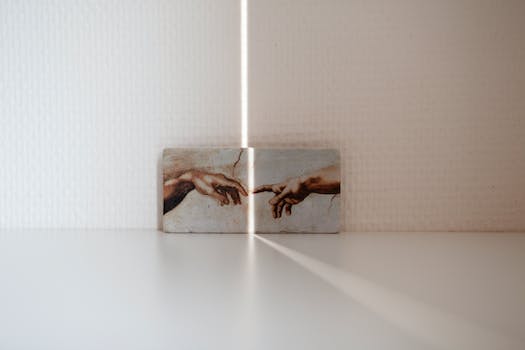Have you had it with your boring white walls? Then maybe it’s time to try some experimental wall painting methods. These methods may be a lot of fun to try out on your own, and they can really put your stamp on a room. Here are ten creative ways to paint walls that will make your house look like a museum piece.
- 1. Introduction
- 1.1. Why unique wall painting techniques are important
- 1.2. Benefits of using unique wall painting techniques
- 1.3. Materials needed for unique wall painting techniques
- 1.4. Preparation before starting unique wall painting techniques
- 1.5. Safety precautions to take while using unique wall painting techniques
- 2. Sponge Painting
- 2.1. What is sponge painting?
- 2.2. How to prepare for sponge painting
- 2.3. Step-by-step guide for sponge painting
- 2.4. Tips for achieving the best results with sponge painting
- 2.5. Common mistakes to avoid while sponge painting
- 3. Stencil Painting
- 3.1. What is stencil painting?
- 3.2. How to prepare for stencil painting
- 3.3. Step-by-step guide for stencil painting
- 3.4. Tips for achieving the best results with stencil painting
- 3.5. Common mistakes to avoid while stencil painting
- 4. Tape Painting
1. Introduction
Have you had it with your plain, uninteresting walls? Do you long for a more interesting and inviting home? Stop right there! The walls of your home can go from drab to fab with the help of the 10 wall painting techniques discussed in this article. These methods can serve as a springboard for either a striking artistic statement or a more understated creative flourish. Let’s dive in and find out how to give your walls a one-of-a-kind look using techniques like ombre painting and geometric wall art.
1.1. Why unique wall painting techniques are important
Wall painting is one of the most significant components of interior design. It can serve as a visual and textural accent to your walls while also conveying something about your taste and character. However, you may not get the intended impression by just painting your walls one solid hue. Here’s where some creative painting methods on walls come in handy. Using these methods, you may give your walls texture, dimension, and visual intrigue, making your house one of a kind.
1.2. Benefits of using unique wall painting techniques
You may completely change the feel of your home by using creative painting techniques on your walls. These approaches not only make your walls look more unique and interesting, but they may also give them depth and texture that regular painting can’t match. Painting techniques like stenciling, color blocking, and ombre allow you to express your individuality through a one-of-a-kind aesthetic. These methods are also useful for masking flaws or adding character to an otherwise boring wall. When decorating your home, one of the best ways to make it feel more like your own is to use creative wall painting techniques.
1.3. Materials needed for unique wall painting techniques
There are only a few things you’ll need to make your own one-of-a-kind wall murals at home. Paintbrushes, rollers, paint trays, painter’s tape, drop cloths or newspapers for floor protection, primer, and the paint colors of your choosing are all necessities, though the precise materials required may vary depending on the method you choose. Sponge, stencil, or even common household objects like bubble wrap or twine may be used for specific approaches. If you take the time to gather your supplies in advance, you may put your full attention on the imaginative act of painting.
1.4. Preparation before starting unique wall painting techniques
It’s necessary to get the wall ready before commencing any fancy painting technique. This entails wiping down the wall and removing any grime or dust that may have accumulated. Before painting, any imperfections in the wall should be repaired by filling and sanding. Priming the wall before painting or applying any other type of decoration is also highly advised. Doing so will aid in producing the greatest possible outcomes and extending the life of the final product.
1.5. Safety precautions to take while using unique wall painting techniques
Walls painted in unconventional ways can be a fun way to make a house feel more like a home. However, safety measures must be taken to prevent harm to individuals. Here are a few precautions you should take:
1. Protect yourself at all times by using gloves, eye protection, and a face shield.
To avoid breathing in any vapors, step two is to provide enough ventilation.
Third, if you need to get up high, be sure you have a stable ladder or scaffolding to use.
Fourth, be sure that no children or pets can get any of the tools or supplies.
5. Always read and abide by the paint and product labels.
If you take care to avoid these potential dangers, you may relax and have fun while designing your own custom walls.
2. Sponge Painting
To give your walls more character and dimension, try sponge painting. The method entails randomly slapping a sponge onto a wall after dipping it in paint. It’s a cool effect that can make your walls stand out from the crowd. Use a finer-grained sponge for a more understated finish. Use a larger, coarser sponge for a more eye-catching result. Try out several paints and methods to find the ideal sponge painting design for your house.
2.1. What is sponge painting?
Sponge painting is a form of ornamental painting in which a sponge is used to apply paint. The sponge produces a mottled, grainy finish that is reminiscent of the look of stone and marble. Sponge painting allows the artist to utilize many different colors and achieve many different effects, from subtle to striking. It’s a common way to make walls, furniture, and other ornamental objects look more three-dimensional.
2.2. How to prepare for sponge painting
Adding texture and dimension to your walls is a breeze with sponge painting. Make sure you have a paint tray, a sponge, and two or more colors of paint before beginning. You should also clean the walls and mask off the places you don’t want to paint before you start painting. When you’re ready to begin, load the sponge with the primary hue, then dab it lightly on the wall in a haphazard fashion. Don’t add a second coat of color until the first one is totally dried. To get the desired result, try using various sized sponges and a variety of paint colors. Sponge painting is forgiving and can be touched up quickly, so don’t be scared to make errors.
2.3. Step-by-step guide for sponge painting
Walls painted with a sponge method look more three-dimensional. The procedure is outlined below.
First, decide on a color scheme by selecting two or three hues that work well together.
Make sure the walls are clean and primed before you start painting them.
Third, dip your sponge: Soak a natural sea sponge in your paint, then blot it dry on a piece of paper towel.
Step 4: Begin painting by dabbing the sponge onto the wall in an arbitrary manner. Create a more seamless look by slightly overlapping the colors.
The fifth tip is to turn the sponge while painting to make new patterns and textures.
Take a break and look at the big picture to evaluate how far you’ve come. Continue making changes until you get the desired result.
To maintain the finish and extend its life, apply a clear coat when the paint has dried.
2.4. Tips for achieving the best results with sponge painting
Adding dimension and texture to your walls can be done quickly and easily with sponge painting. To maximize your effectiveness, consider the following:
First, select the proper sponge; various sponges will impart various surface textures to the wall. Find the form and feel that works best for you by trying out a variety of options.
Apply a coat of paint in the color you choose to use as the foundation for your sponge painting as step two. An even coat of paint before you start sponge painting will yield the best results.
Use a sponge that is damp, but not dripping wet; this is step three. The paint will spread evenly and not leak if you do this.
Attempt a test on a practice surface
2.5. Common mistakes to avoid while sponge painting
Sponge painting is a popular and easy technique that can add texture and depth to your walls. However, there are some common mistakes that people make while sponge painting that can ruin the effect. One mistake is using too much paint on the sponge, which can lead to a blotchy and uneven finish. Another mistake is not blending the colors properly, which can result in a muddy or unappealing look. It’s also important to use a light touch when dabbing the sponge onto the wall, and to vary the pressure and angle for a more natural look. By avoiding these common mistakes, you can achieve a beautiful sponge-painted finish that adds personality and style to your home.
3. Stencil Painting
Stencil painting is a creative and simple method to personalize your walls. To apply a stencil, pick one you like, attach it to the wall using tape or adhesive, and then fill in the design with a roller or a brush. Stencils come in all sorts of forms, allowing you to design a look that’s perfect for you. Stenciling is also a fantastic alternative to wallpaper or expensive artwork for adding color and design to a room.
3.1. What is stencil painting?
Stencil painting is a method of applying patterns or images to a surface by means of a stencil. After positioning the stencil, paint is brushed over it, revealing the pattern beneath. You can use stencils to decorate just about anything. It’s a terrific option for putting your own stamp on your living quarters.
3.2. How to prepare for stencil painting
It’s crucial to get the surface ready before beginning the stencil painting procedure. Use a moist towel to wipe down the wall and then allow it to air dry. Sandpaper can be used to smooth out any flaws in the wall. The next step is to paint a basecoat and allow it to cure thoroughly. This will help the stencil stay put and prevent paint from seeping under the edges. When the first layer of paint is dry, tape the stencil to the wall in the desired location. Get things leveled out and safe. The paint should be dabbed on using a stencil brush or foam roller. To avoid paint bleeding, avoid loading the brush or roller too heavily. Carefully peel the stencil away from the wall when you’ve finished painting inside of it, then wait for the paint to dry. To finish the wall, simply repeat the steps for each individual part.
3.3. Step-by-step guide for stencil painting
Painting with stencils is a simple and enjoyable technique to give your walls a special look. If you want your stencil painting job to turn out great, use these steps:
Step 1: Decide on a stencil pattern and collect your supplies.
2. Clean and prime the wall in advance.
Apply painter’s tape or adhesive spray to the wall and then attach your stencil to it.
Fourth, using a stencil brush or roller, apply paint to your stencil.
5. While the paint is still wet, carefully peel back the stencil from the wall.
Six, do it again and again until you have the pattern or design you want.
If you make a mistake or want to add another coat, wait until the paint is totally dried.
8 – Take pleasure in your newly stenciled walls!
3.4. Tips for achieving the best results with stencil painting
You may get professional-looking results from your stencil painting if you follow these guidelines. First, to prevent any paint from leaking under or around the stencil, press it firmly against the wall. To keep it in place, use spray adhesive or painter’s tape. Second, pick the best paint for the surface. Stenciling with acrylic paint is a fantastic idea because it dries quickly and doesn’t smear. Third, dab the paint on rather than brush it on with a stencil brush or sponge. If there is any bleeding under the stencil, this will help stop it. Last but not least, work slowly and attentively to get a polished appearance.
3.5. Common mistakes to avoid while stencil painting
There are a few typical rookie blunders when it comes to stencil painting. Failure to adequately adhere the stencil to the target surface is a common cause of smearing and bleeding. Overuse of paint can also lead to bleeding and an untidy appearance in the artwork. It’s best to start with a faint touch and progressively add more color. Last but not least, if the stencil isn’t cleaned correctly after each usage, paint will build up and distort the image. Achieving a clean and polished stencil painting is possible by avoiding these typical pitfalls.
4. Tape Painting
Tape painting is a simple and enjoyable technique for making one-of-a-kind murals. Use painter’s tape to create a pattern, and then go over it with your chosen hue. Carefully peel off the tape after the paint has dry to expose the pattern. You can paint stripes, geometric designs, or even words or phrases with this method. Try with various tape widths and application methods to see what works best for you.
4.1. What is tape painting?
Painting with tape is a method of making precise lines and geometric forms on walls and other surfaces using painter’s tape. Tape is first placed in a planned formation, and then the area is painted. The tape is taken off after the paint has dried, revealing the clean lines and geometric forms underneath. Whether you’re going for a dramatic, graphic style or a more subtle, textured pattern, tape painting can help you get there.
4.2. How to prepare for tape painting
Before applying the tape, make sure the wall surface is completely free of dust and debris. Use a pencil and a ruler to measure and trace the pattern or design you want. Carefully apply the painter’s tape and firmly press down on it to create a clean edge. Low-tack painter’s tape is recommended to prevent wall surface damage during removal. After taping off the area, carefully apply the paint with a roller or brush, making sure to avoid the tape’s edges. After the paint has dried completely, you can carefully remove the tape to see the design you’ve created.
4.3. Step-by-step guide for tape painting
Using tape to paint on walls is a great way to personalize your space. It’s a straightforward method that requires few resources and can be executed by anyone. Tape painting is explained in detail below:
Step 1: After deciding which section of wall to paint, tape off that section.
Second, make sure the tape is level and straight by using a level.
Third, paint your basecoat and allow it to dry overnight.
When the first coat is dry, add more tape in the design of your choice.
To avoid tape bleeding or smudging, step five is to use firm pressure when applying the tape.
The final step is to paint over everything and let it dry.
After the last layer has dried, you can unveil your custom artwork by carefully peeling back the tape.
Tape painting is a fun and easy way to put your stamp on a space. You can design a unique wall that will make your home stand out with some imagination and perseverance.
4.4. Tips for achieving the best results with tape painting
If you want perfectly straight lines when painting a wall, using painter’s tape is a terrific idea. To maximize your effectiveness, consider the following:
1. If you don’t want to ruin your previous paint job, use painter’s tape made especially for fragile surfaces.
2. If you want the tape to stick well, you need make sure the surface is dry and clean before applying it.
3. Press the tape down firmly with a putty knife or credit card to stop any bleeding that may occur.
4. Before applying the tape, make sure the base coat of paint is dry.
5. The tape can be sealed and prevented from bleeding by painting over the edges with the base coat color.
6. Let the paint dry completely once you’ve applied it, then peel off the tape.
7. If you don’t want to ruin your freshly painted walls, remove the tape cautiously and slowly at a 45-degree angle.
You can make your tape painting job look like it was done by a pro and add some character to your home if you follow these easy steps.
4.5. Common mistakes to avoid while tape painting
There are a few frequent pitfalls in tape painting that you should avoid if you want your work to look clean and professional. Before anything else, invest in some good painter’s tape that won’t leave any sticky residue when removed. Make sure the tape is firmly pressed down on the borders to avoid any bleeding or smudging. To avoid peeling or chipping, remove the tape before the paint is entirely dry.
Conclusion
Walls painted in unconventional ways can be a great way to make a house feel more like a home. You can make a room that is uniquely you by blending and contrasting various colors, materials, and patterns. These methods will allow you to make a statement while transforming your house into a beautiful haven, whether you choose bold stripes, detailed stenciling, or a whimsical ombre effect.






These 10 innovative and imaginative DIY home decor ideas from [object Object] provide a refreshing approach to enhancing ones living…